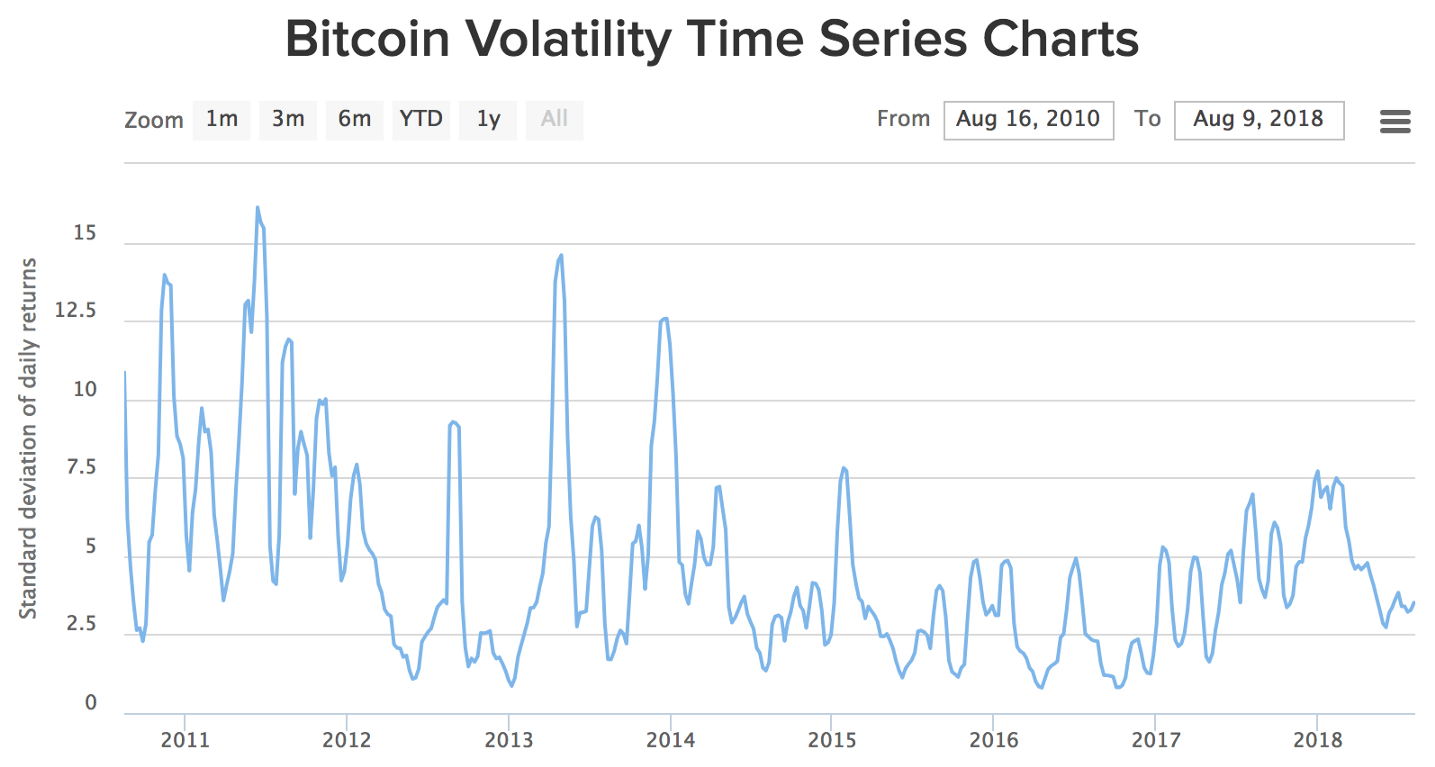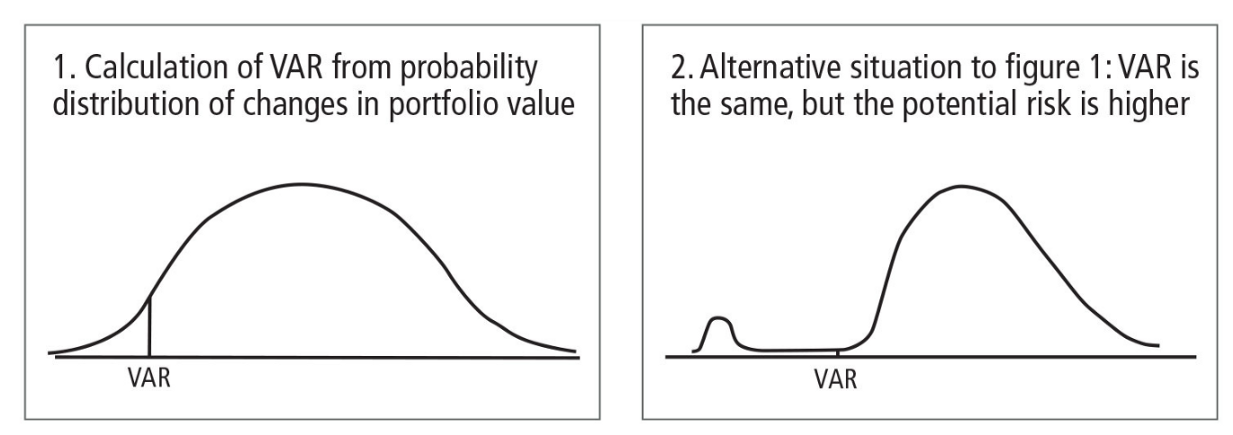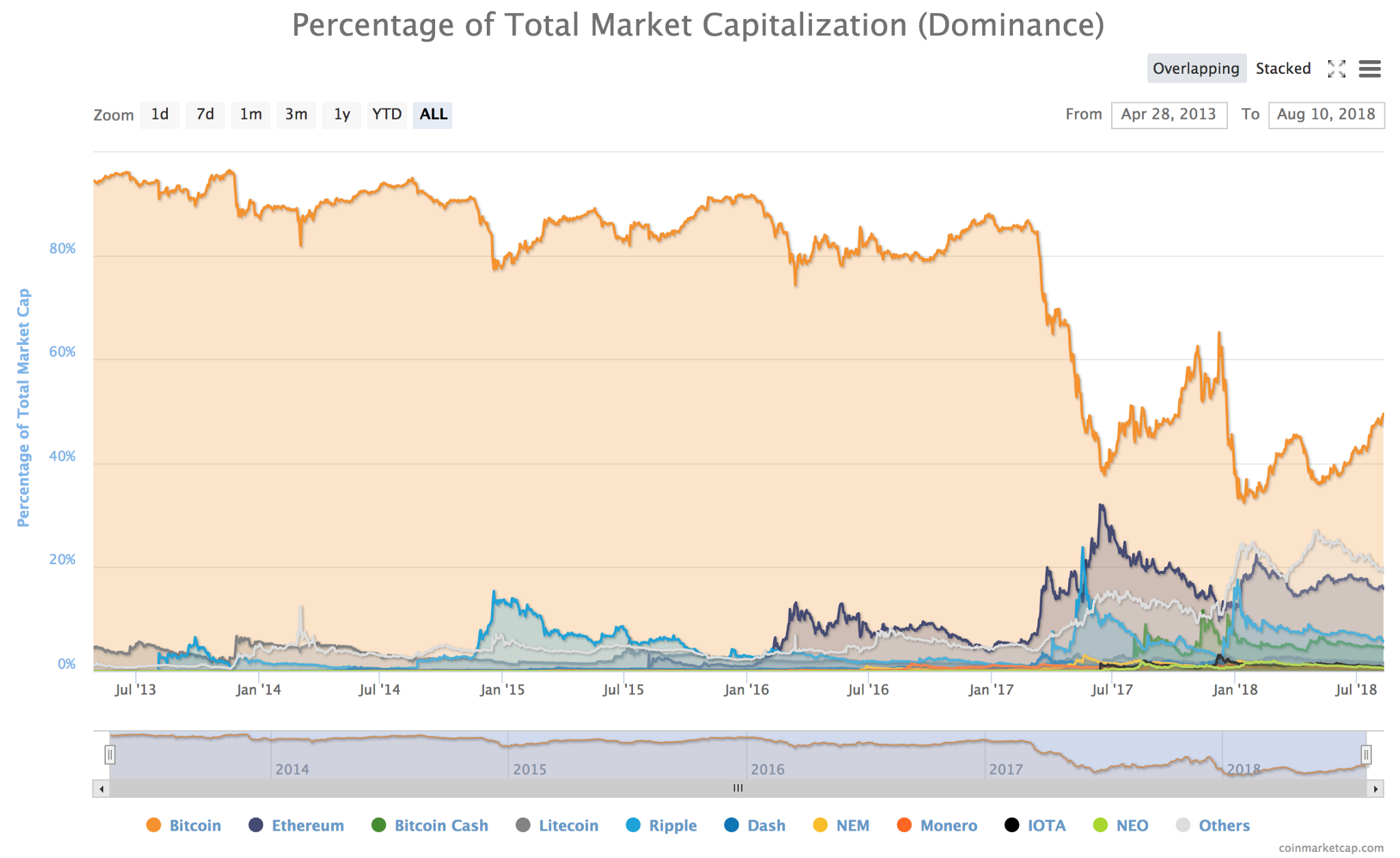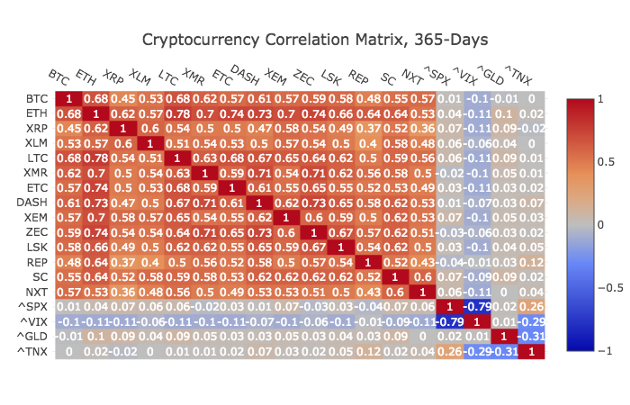To many, Bitcoin is synonymous with risk. That’s because the price of Bitcoin has been extremely volatile over the years:

The above graph shows that the standard deviation of BTC’s daily returns — a measure of its historical volatility — has been as high as 15.645% over the last 8 years. In contrast, fiat currency’s 30-day volatility averages around 0.5%-1.0%, while gold’s averages around 1.2%.
High volatility makes Bitcoin a promising opportunity — but with that opportunity comes significant risk.
While there’s no way to take all the risk out of investing in Bitcoin, there are tools you can use to better understand and manage that risk. Here’s a roundup of ways that you can analyze Bitcoin risk in your own portfolio.
Analyze Bitcoin risk through VaR (Value-at-Risk)
One of the most general measures of an asset’s risk is Value-at-Risk (VaR). VaR represents the maximum amount of value you could expect to lose from your investment in that asset over a given time horizon.
VaR is expressed as a confidence interval (usually 95%) in units of a particular currency over a particular time horizon. For example, if your crypto portfolio has a “95% 6-week VaR of $50,000 USD,” that means that there is 95% confidence, statistically speaking, that your portfolio will not lose more than $50,000 USD of value over the next month-and-a-half.
There are three main methods you can use to calculate the VaR of an asset like Bitcoin:
- Historical calculation. This method of calculation makes predictions on future asset risk based on how it’s performed in the past. If you’re using this method to calculate a VaR with 95% confidence, you just need to sort the historical data on asset returns — for example, daily returns on BTC — in order from greatest loss to greatest gain. The bottom 5% of data points will tell you what your VaR is: for example, if the losses in the bottom 5% range from a 60% loss to a 40% loss, then you can say that you have 95% confidence that your daily BTC loss will not exceed 40% of your investment.
- Variance-covariance calculation. This method calculates VaR using the assumption that the returns of an asset are normally distributed. By estimating the expected return and standard deviation of an asset such as Bitcoin, you can create a bell curve of possible returns. Then you can say with 95% confidence that losses will not exceed the loss predicted at the 5% mark on your bell curve.
- Monte Carlo simulation. Monte Carlo simulations predict the future outcomes of things like asset prices by building a model of those prices and then running random trials using the model. You can use the “best” of the worst 5% of those trial outcomes to determine a 95% VaR — simply googling “Bitcoin Monte Carlo simulation” will provide you with a litany of data from various Monte Carlo simulations that analysts have run to forecast Bitcoin’s price.
VaR is a good place to start if you don’t have any concrete sense of how risky your crypto portfolio is — 95% confidence is something of an “industry standard” when it comes to statistics, and a few hours of pulling data from BTC-price-tracking websites can give you all you need to get that level of confidence in the largest potential loss you might incur.
Calculate expected shortfall to understand the ALMOST worst-case scenarios of Bitcoin risk
While VaR is a popular and convenient way of wrapping your head around investment risks, it has shortcomings — especially when it comes to Bitcoin risk.

Perhaps the most pressing shortcoming of VaR is that it’s not very good at accommodating black swan events: high-impact market events that are virtually impossible to predict. The standard academic example of a black swan event is the hyperinflation that Zimbabwe experienced back in 2008 — but crypto is so frequently unpredictable that anything from the announcement of an SEC meeting to the launch of a new blockchain project could conceivably qualify as a black swan event.
VaR ignores the lowest-probability, highest-loss scenarios — whether you’re dealing with a 95% VaR or a 99% VaR, you’re necessarily missing the sliver of possible outcomes that are most driven by black swans. When you’re considering the young and notoriously unpredictable market of crypto, that may be the most important sliver of Bitcoin risk to keep in mind.
The concept of expected shortfall fills this gap: it’s defined as the expected amount of loss you’ll incur if you exceed the VaR. In other words, it’s the remaining 5% of possible outcomes in a 95% VaR, or the remaining 1% in a 99% VaR.
You can see why expected shortfall is so important if you consider the following visuals of two potential portfolios, owed to University of Toronto’s John Hull:

The VaR is the same in both of these cases, but it’s clear that the expected shortfall — what we see on the left side of both curves — is greater in the second portfolio. If we don’t pay attention to the least likely negative outcomes, we might fool ourselves into thinking that assets with very different risk profiles are actually equally risky.
Don’t forget, though: expected shortfall does not tell you the worst-case scenarios for your investment. When you buy an asset outright — whether that’s Bitcoin, or property, or a stock — the worst-case scenario is that the asset becomes worthless, the value of your investment going to zero. In other cases — for example, if you short Bitcoin or trade with leverage — the worst-case scenario could be losing much more than your initial investment, going into debt as a result. This is why you should always consult an investment professional before you begin trading financial instruments.
Diversify in crypto by betting on different parts of the ecosystem
Once you have a more quantified sense of Bitcoin risk, it’s natural to ask how you can mitigate the risk of investing in Bitcoin. At this early stage in the crypto industry, does such thing as a “de-risked crypto portfolio” even exist?
One of the most established ways of reducing risk in a portfolio is diversification: the practice of investing in assets that aren’t perfectly correlated with each other in order to generate better returns on average.
You might have heard that Bitcoin is the main mover of the overall crypto market, with virtually every other cryptoasset’s price being significantly impacted by fluctuations in the price of BTC. To an extent, that’s true: Bitcoin still controls roughly 50% of the crypto market’s overall market cap. It’s fair to wonder, therefore, whether it’s really possible to “diversify” one’s crypto holdings in a meaningful way.

Bitcoin’s dominance is significant, but don’t let that convince you that it’s the only game in town. If you take a look at the data, you’ll find that most cryptocurrencies are only moderately correlated with Bitcoin. Here’s a chart of correlations between cryptocurrencies over the last year:

There are two lessons from these data.
- When you’re diversifying your overall portfolio, you’ll probably want to hold more than just crypto. Even though the crypto-crypto correlations listed above aren’t perfect (i.e. a correlation of 1), they are all positive (i.e. between 0 and 1). Compare that with the near-zero correlation between Bitcoin and the S&P 500: if your goal is purely diversification, it may make more sense to hold an S&P 500 index fund and BTC, rather than BTC and ETH. (Corollary: If you’re invested in the S&P 500, given the low correlation between it and BTC, it may make sense to buy BTC in order to increase your return, lower your adjusted risk, and improve your Sharpe ratio.)
- It’s possible to achieve some diversification within the crypto ecosystem. If you were only reading news reports, you might expect all these different cryptocurrencies to have 0.8 or 0.9 correlations with BTC, which isn’t the case. XRP, for instance, doesn’t even have as high as a 0.5 correlation with BTC.
Given that cryptocurrencies aren’t perfectly correlated, how might you build a coin collection that provides some diversification? There’s a pretty simple and effective strategy to use here: pick projects that represent compelling long-term investments in the overall ecosystem.
It’s easy to get enthralled in every new crypto project you see pop up on Reddit and Hacker News. In these early days of the crypto universe, though, it’s a near certainty that not all of these projects will survive, let alone prosper. So, when you’re trying to round out your portfolio in a risk-adjusted way, you should have clear and compelling theses about why each cryptoasset you own will be important to crypto’s overall success in the long run.
For example, one might decide to build a crypto portfolio around Bitcoin, Ethereum, and Bitcoin Cash by virtue of the following three theses:
- Because Bitcoin still has 50% market dominance, it serves as a kind of “index fund” for crypto: if crypto succeeds as a sector in the long run, then Bitcoin will as well.
- Because Ethereum is the developers’ platform of choice for making applications beyond currency/store-of-value, it’s a way of betting that blockchain technology will succeed as more than just money: if DApps and/or ICOs succeed in the long-run, than Ethereum will as well.
- Because Bitcoin Cash is exclusively focused on crypto as digital cash, it’s a good way of betting that crypto will succeed as a facilitator of commerce: if crypto takes over as a method of day-to-day transactions, there’s a good chance that Bitcoin Cash will be leading the charge.
Consider taking the time to actually write down your theses before you add a new cryptocurrency to your portfolio: that practice will keep you honest and discourage you from getting caught up in FOMO or FUD as you invest.
Invest and de-risk responsibly
Simply by starting to think about how to manage Bitcoin risk, you’re already heading in the right direction. But the journey’s not over yet: dig into historical price data, start calculating some VaRs and expected shortfalls, and — above all — get advice from an investment professional.
It can be thrilling and rewarding to dive into crypto in these early days as the industry is being born. To make the most of it, though, responsibility has to come first — and a solid understanding of risk is foundational to responsibility.
The above references an opinion and is for informational purposes only. It is not intended as and does not constitute investment advice, and is not an offer to buy or sell or a solicitation of an offer to buy or sell any cryptocurrency, security, product, service or investment. Seek a duly licensed professional for investment advice. The information provided here or in any communication containing a link to this site is not intended for distribution to, or use by, any person or entity in any jurisdiction or country where such distribution or use would be contrary to law or regulation or which would subject SFOX, Inc. or its affiliates to any registration requirement within such jurisdiction or country. Neither the information, nor any opinion contained in this site constitutes a solicitation or offer by SFOX, Inc. or its affiliates to buy or sell any cryptocurrencies, securities, futures, options or other financial instruments or provide any investment advice or service.



